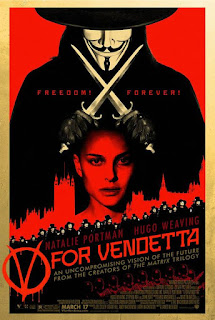Pastiche definition - an artistic work in a style that imitates that of another work, artist, or period.
Parody definition- an imitation of the style of a particular writer, artist, or genre with deliberate exaggeration for comic effect.
What is being discussed in each text?
Jameson - the link between pastiche and parody
Hutcheons - main features that distinguishes postmodernism from modernism
What is Jameson's definition of parody and pastiche? Quote?
Parody is 'the imitation of a peculiar or unique idiosyncratic
style, the wearing of a linguistic mask, speech in a dead language.' Pastiche is 'Is a neutral practise of such mimicry, without any of parody’s
ulterior motives, amputates of the satiric impulses, devoid of laughter and of
any conviction'
What is Hutcheon's definition of parody and how does this relate to Jameson's definitions? Quotes?
Hutcheon's thinks pastiche is parody, "Parody—often called ironic quotation, pastiche, appropriation, or intertextuality' this contradicts Jameson's view as this means that there is no difference between the subjects but that pastiche is as much parody as parody is, rather that a neutral practise but the form itself.
What is Hutcheon's criticism of Jameson?
Hutcheon criticized views on postmodernism as he says its without principles things can serious only humous as parody is humous but pastiche is not.
What are Jameson's and Hutcheon's positions on Modernism and Postmodernism?
Jameson views are that modernism is the most important, where as postmodernism is disrespectful to art of the past and a collection of the past's work. Whereas Hutcheon's views are that rereading of the past can incorporate, absorb and use the past therefore postmodernism is the most important
'Write a 300 word summary
of parody and pastiche according to Jameson and Hutcheon including quotes and
referenced in the Harvard style. Your summary must also demonstrate how these
theories relate to at least 2 examples of graphic design (1 from the session
and at least 1 sourced by yourself).'
The definitions of Parody and pastiche in postmodern design are subject to opinions by different Authors. Two of the main Authors who discuss these the subjects in detail in their work are Linda Hutcheon in ‘The Politics of Postmodernism: Parody and History’ and Frederic Jameson in ‘Postmodernism’ , who both have different definitions for pastiche. Jameson preserves Parody as 'the imitation of a peculiar or unique idiosyncratic style, the wearing of a linguistic mask, speech in a dead language.'(Jameson 1990) and Pastiche as ' a neutral practice of such mimicry, without any of parody’s ulterior motives, amputates of the satiric impulses, devoid of laughter and of any conviction' (Jameson 1990), Jameson sees pastiches as a form of parody but without any political influences, hidden ideas, humor or conviction, in his ideology parody can become pastiche. For example Stranger and Stranger, Alcohol bottle branding which are based around pastiche of old cigarette box designs , would be pastiche as there’s not humor or hidden meaning in this design but its created to reflect a certain design style from a selected time, therefore this is pastiche not parody in his view.
1950's cigarets box designs
Stranger and stranger bottle designs
This contradicted by Linda Hutcheon's view of pastiche as parody, "Parody—often called ironic quotation, pastiche,
appropriation, or intertextuality', (Hutcheon 1987) she states that parody is some called pastiche
but is indeed the same thing, this contradicts Jameson's view as
this means that there is no difference between the subjects but that
pastiche is as much parody as parody is, rather than a neutral practice
but the form itself. This is show via the poster designed for V for Vendetta a political
activist film, this films uses imagery/style from the same style of design as propaganda
posters, they’ve used these style in postmodern design
tor relate, Jameson would see this as parody due to the way it relate to political
motives whereas Hutcheson would see if as both pastiche as well as parody.
propaganda posters
V for Vendetta Movie Poster
bibliography
Hutcheon, L. (1987) Cultural Critique, No. 5, Modernity and Modernism, Postmodernity and Postmodernism, pp. 179-207.
Jameson, F. (1990) Postmodernism, or, the cultural logic of late capitalism. 5th edn. London: Verso Books.







No comments:
Post a Comment